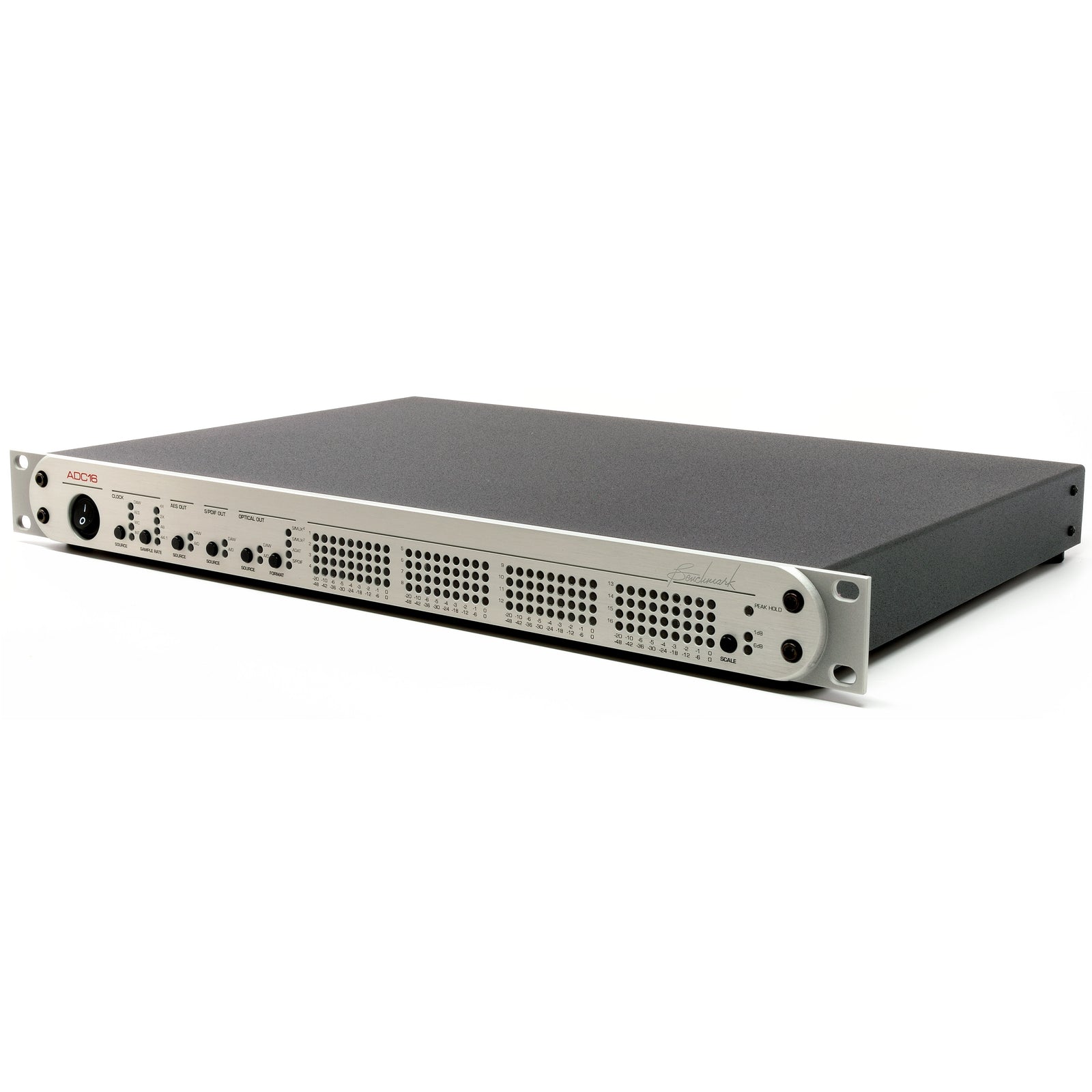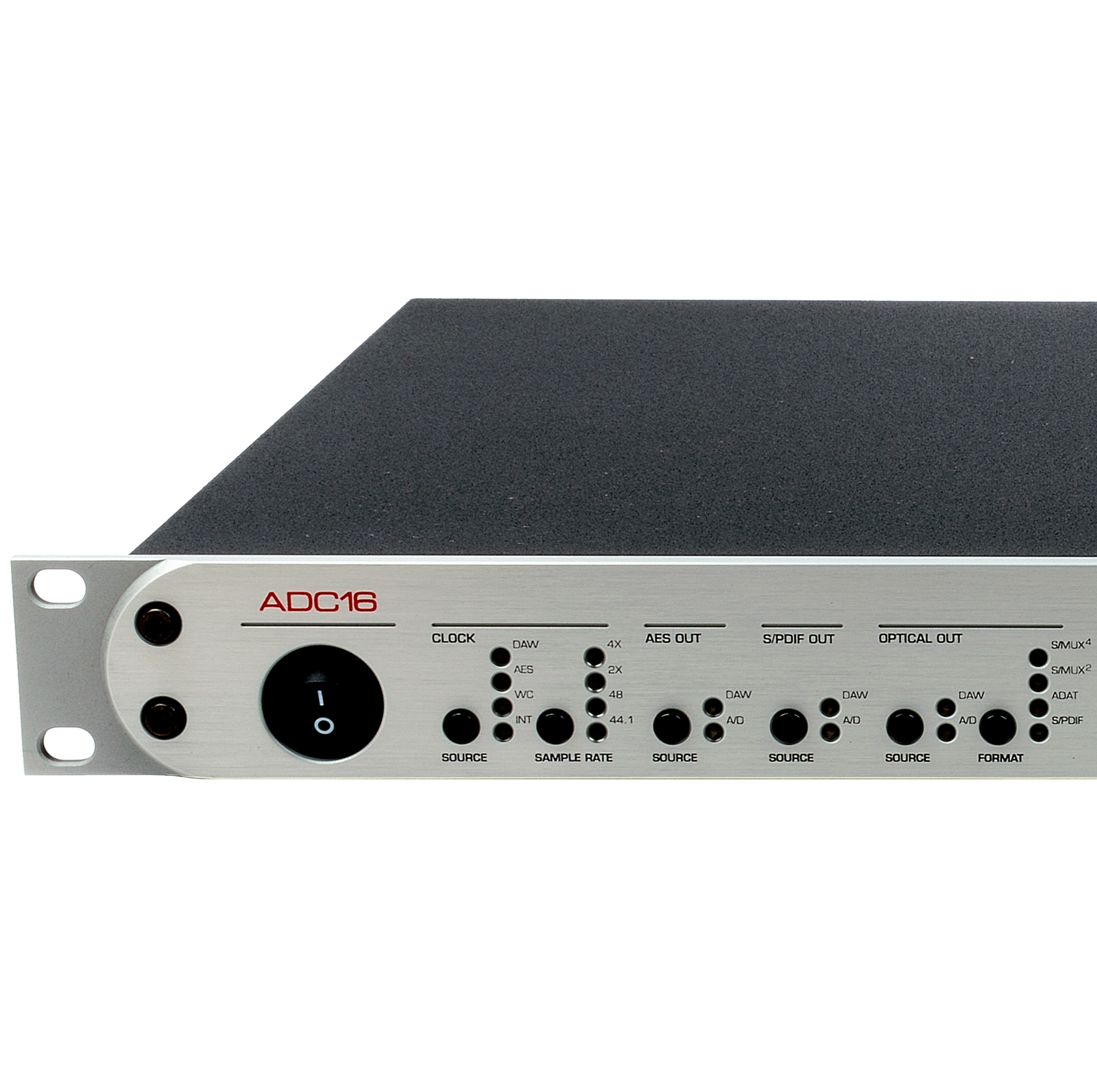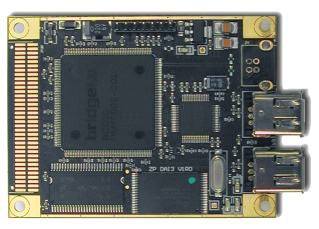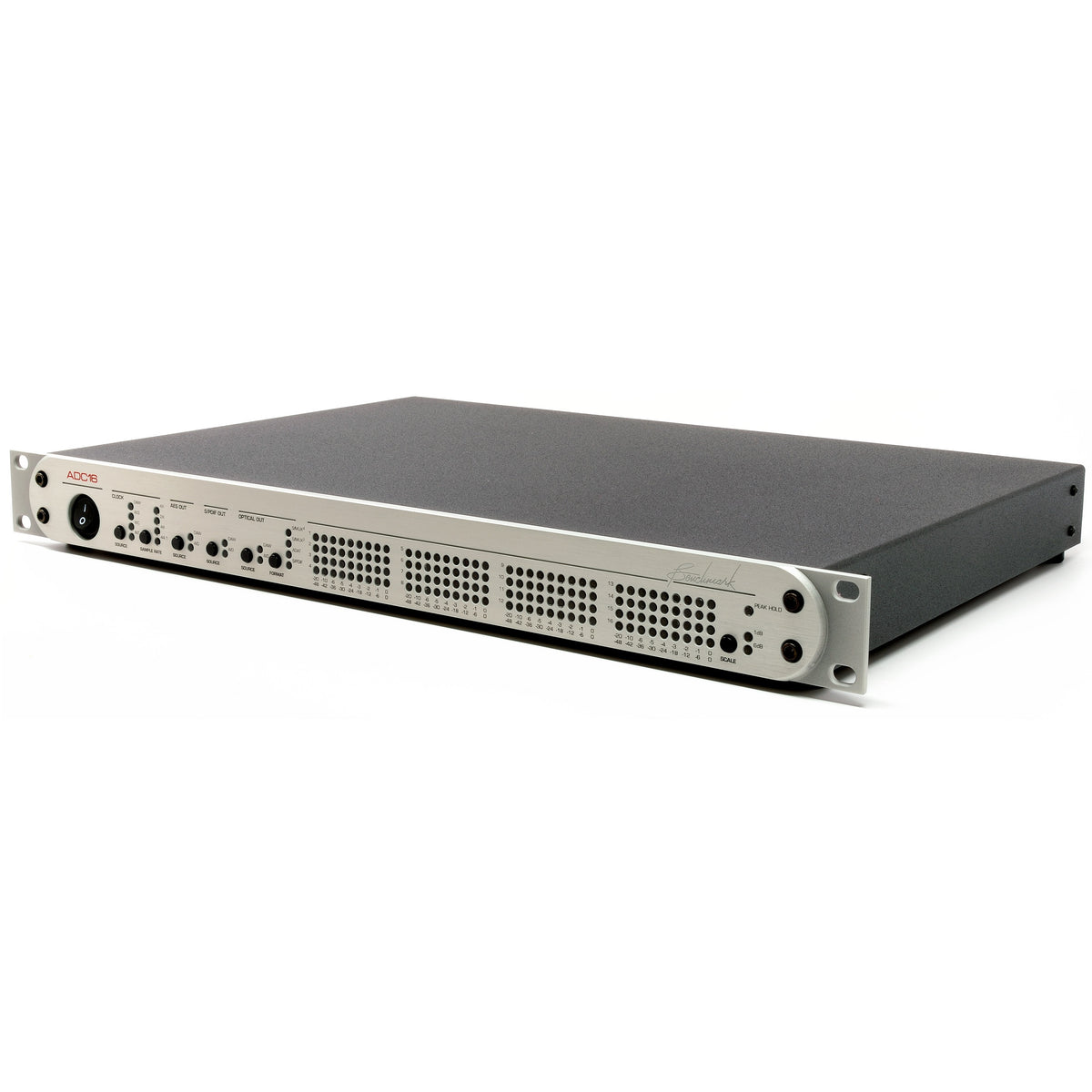





500-14500-100
Benchmark ADC16 16-Channel Analog to Digital Audio Converter - Discontinued
Music is a Beautiful thing...especially with the Benchmark ADC16, 16-Channel 24-bit 192kHz A/D Audio Converter.
"I played a Gibson Custom Shop '59 Les Paul, which has a fantastic warm humbucker tone. I have recorded this rig with other converters, but the Benchmark ADC16-recorded tunes played back through the DAC1USB (or even my Apogee DAC) blew them all away. I have never heard my guitar rig sound this good..."
- Jackson Macinnis, Everything Audio Network
Benchmark’s philosophy is very clear: digital converters should preserve all of the glorious nuances of the source so that the listener can simply engage with the music. Benchmark’s converters are world-renowned for fulfilling this mandate.
The ADC16 delivers the full performance of Benchmark's 2-channel ADC1 in a full-featured 16-channel package. With this channel density, Benchmark performance is surprisingly affordable.
DESIGNED, ASSEMBLED, AND TESTED IN THE USA
This Benchmark product was designed, assembled, and tested in the USA using USA and imported components. Most major components are made in USA.
Benchmark Analog Input Stages
The ADC16 features 16-channels of transformerless balanced analog inputs. The analog front-end continues Benchmark’s tradition of exceptionally pristine, award-winning analog circuitry – a legacy that dates back to the early 1980's.
Each channel of analog input has a gain control (via a trim-pot) that has a 20 dB range. At 0 dB of gain, it can accept 28 dBu at the input without clipping. At max-gain, an 8 dB input-signal will drive the converters to full-scale.
Routable Digital Outputs
The ADC16 features three separate 16-channel output groups:
- Balanced AES/EBU (16 channels at all sample rates)
- Coaxial AES (16 channels at all sample rates)
- Optical (AES or ADAT) (16 channels at all sample rates and formats)
There are two sources available for each output group:
- A/D output (16 channels)
- DAW return (16 channels) - if equipped with optional Firewire card
The control panel allows the assignment the source groups (A/D or DAW) to the output groups (AES, Coaxial, or Optical). This is very useful when the ADC16 is used in a studio with an analog console. The digital audio from the A/D chips can be sent directly to the digital outputs to a multichannel D/A to feed the console – completely bypassing the DAW while tracking. This reduces latency and DAW artifacts in real-time monitoring. At a press of a button, the return channels from the DAW can be routed to the same outputs for mixing.
Multi-Format Optical Outputs
The eight optical outputs on the ADC16 can be operated in SPDIF or ADAT mode at sample-rates up to 192 kHz (ADAT has SMUX2 and SMUX4 functionality).
The ADAT mode of the optical outputs makes the ADC16 a perfect companion for older Pro Tools LE interfaces, as well as other digital interfaces with ADAT and coaxial inputs, as it can fulfill the entire digital-input capability of the interface with state-of-the-art A/D performance.
UltraLockDDS™ - Jitter-Immune Clock System
Jitter attenuation is achieved with digital filters in a custom FPGA that controls the DDS system. All jitter-induced distortion artifacts are well below audibility under all operating conditions. Jitter-induced distortion is always at least 135 dB below the level of the music. The jitter-performance of UltralLockDDS™ meets or exceeds the performance of Benchmark’s UltraLock™ system, but does not use asynchronous sample rate conversion (ASRC). The elimination of the ASRC processing significantly reduces system latency and provides the most direct path from the A/D to the digital interface.
Flexible Frequency-Agile Clock Operation
Benchmark’s UltraLockDDS™ system is frequency agile. It can lock to any sample rate between 28 kHz and 200 kHz, and it can do so in a few milliseconds. Special pull-up and pull-down sample rates for film to video transfers are no problem. Best of all, jitter is always attenuated to levels that are well below audibility. Jitter performance is identical in all modes of operation.
16-Channel Meter Bridge
The ADC16 features 9-segment meters for each channel. These meters are single-sample accurate, so that even the shortest peaks are registered. The meters can be set to display in 6 dB increments (48 dB range) or 1 dB increments (20 dB range). In both cases, the meters can be put in ‘peak-hold’ mode, which will hold the highest-valued sample until the ‘peak-hold’ mode is reset.
Optional DAW Interface
The ADC16 has a slot for an optional Firewire card. With a Firewire connection to the computer, the ADC16 can connect to a DAW, without the need for any other hardware.
Note: The optional Firewire card supports Windows operating systems. It also supports older Mac operating systems (up through Version 10.6). Mac systems above 10.6 are not supported.
Specifications |
|
|---|---|
|
SNR – A-Weighted, 0 dBFS = +16 to +29 dBu |
121 dB |
|
SNR – Unweighted, 0 dBFS = +16 to +29 dBu |
119 dB |
|
SNR – A-Weighted at max gain, 0 dBFS = -10 dBv |
117 dB |
|
THD+N, 1 kHz at –1 dBFS |
-102 dBFS, -101 dB, 0.00089% |
|
THD+N, 1 kHz at –3 dBFS |
-107 dBFS, -104 dB, 0.00063% |
|
THD+N, 20 to 20 kHz test tone at –3 dBFS |
-105 dBFS, -102 dB, 0.00079% |
|
Frequency Response at Fs=192 kHz |
-3 dB, +0 dB, 2 Hz to 94 kHz +/- 0.02 dB, 20 Hz to 20 kHz |
Manual
Full specifications, including performance plots, are included in the downloadable manual:
Reviews
Drivers
Drivers for the optional Firewire card are available here:
You may also like
Buy one component* and save 25% on additional components of equal or lesser value, limit3.
Offer ends Dec. 4, 2025
*Applies to all AHB2, HPA4, LA4 and DAC3 components. Excludes cables and accessories.








